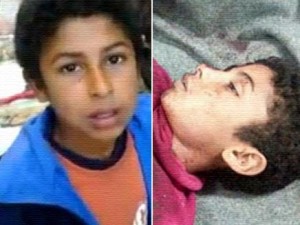
Pro-Morsi supporters clash at Sidi Gaber, 28 June 2013. Photo by Sameh Meshally
A brief but long-lasting moment occurred on 19 May 2012, one that would awaken me to the changing realities in our neighborhood since the January 25 Revolution. It was late at night, while standing on my balcony overlooking Cleopatra Square, Alexandria, at the height of the first leg of the 2012 presidential campaign. A scuffle broke out between a group of political campaigners tearing up posters of candidate Amr Mousa, and shop owners and residents who supported Mousa. I ran down to film the incident, only to be tackled by undercover “security” who mistook me as part of the group. One yelled: “We are taking you to army headquarters.” Then a voice was heard: “Leave him, he is one of us” (as in to say, a resident of the area). It turned out to be my barber. In exchange for letting me go, I had to delete the video footage—which I pretended to do but did not.
I took a few steps back in disbelief. Someone I had trusted turned out to apparently be a part of an informal former regime loyalist network. This same group has attacked revolutionary protest marches that pass frequently through this area with bottles and knives. This same Port Said Street was the site of several human chains formed by former regime loyalists in order to prevent revolutionary protests from moving on, often unsuccessfully.
The motives behind their actions soon become apparent.
Stroll some one hundred meters or so, and you end up in Sidi Gaber–Alexandria’s budding Tahrir Square, second only to, or possibly eclipsing, the Qa’id Ibrahim Mosque courtyard–where the military’s fiercely guarded northern command headquarters is based. The barber and his friends see themselves as the first line of defense against encroachment on the “guardians of the nation.” Whether they were paid or not, I could not verify.
Sidi Gaber recently featured fierce protest violence during the pro-Morsi demonstrations on 5 July. Out of the thirty deaths across Egypt, a staggering seventeen occurred in Sidi Gaber alone. This includes the heart-wrenching video of what appeared to be pro-Morsi supporters throwing two teenagers over a ledge, resulting in the death of one of them. A week earlier, American student Andrew Pochter was stabbed to death in the same area.








